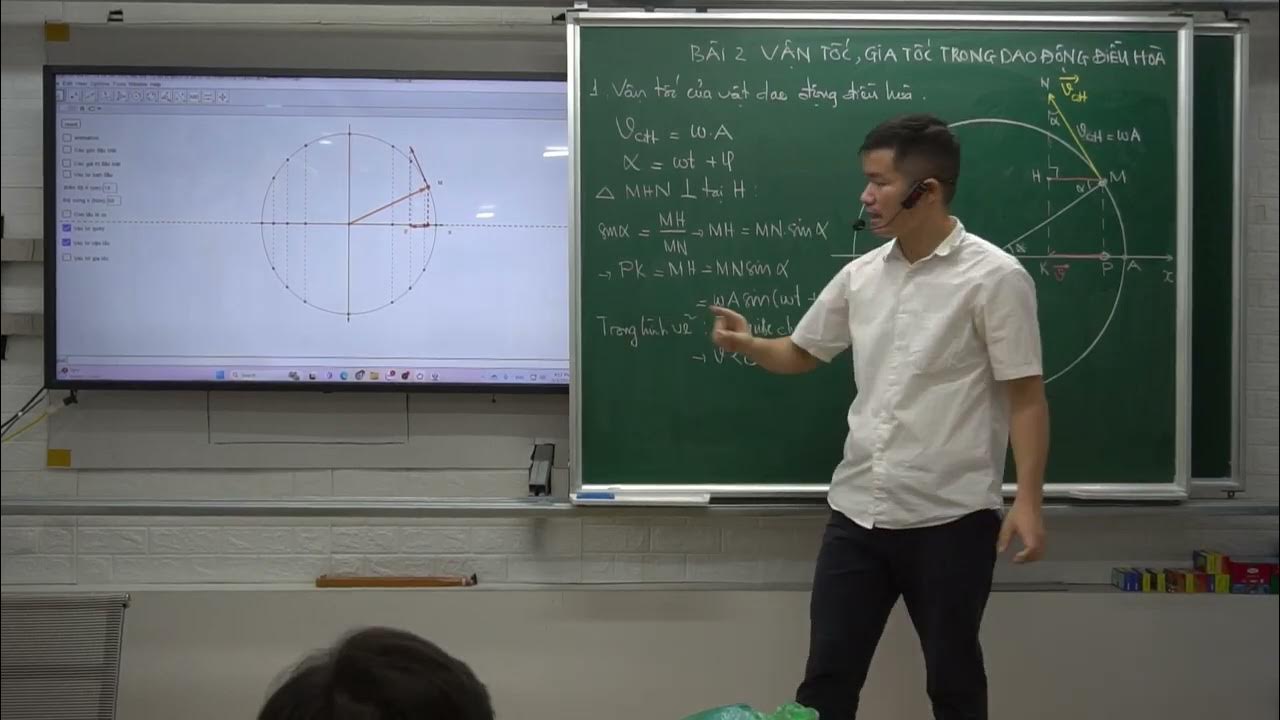Aula 1 – Movimentos Periódicos e Introdução ao MHS
Summary
TLDRIn this educational video, Professor Rafael Juca introduces the concept of harmonic motion, focusing on simple harmonic motion. He uses the analogy of a pendulum, a mass attached to a spring, to explain the repetitive nature of oscillations. The video covers the transition of potential to kinetic energy in a conservative system without external forces, illustrating how energy is conserved and the system oscillates with a constant period. The explanation includes the forces at play, the maximum velocity at the equilibrium point, and the concept of frequency in relation to the period of oscillation, measured in Hertz. The goal is to provide a foundational understanding of harmonic motion for students.
Takeaways
- 📚 The script introduces the concept of periodic motion, specifically focusing on harmonic motion.
- 🌟 The professor, Rafael Juca, uses the example of a pendulum to explain the principles of harmonic motion.
- 🔁 The pendulum is set up with a string attached to the ceiling and a block at the end, allowing it to oscillate.
- 📈 When the block is released from a displaced position, it begins to oscillate due to gravity, moving towards the equilibrium position.
- 📉 At the equilibrium point, the velocity of the pendulum is at its maximum, and it decelerates as it moves away from this point.
- 🔄 The pendulum's motion is described as repeating, with the block swinging back and forth in a circular arc.
- 🛑 In a real-world scenario, the motion of the pendulum would be damped due to air resistance, causing it to lose mechanical energy over time.
- 🚫 Damping forces, such as air resistance, remove energy from the system, leading to a decrease in the amplitude of oscillation.
- 🔄 In an ideal scenario without damping forces, the mechanical energy of the system is conserved, and the pendulum would continue to oscillate with the same amplitude.
- 🕒 The period of the motion is the time it takes for one complete oscillation to occur and is a key characteristic of harmonic motion.
- 🔢 The frequency of the motion is defined as the number of oscillations per unit of time and is measured in Hertz (Hz).
Q & A
What is the main topic of the video script?
-The main topic of the video script is the introduction to harmonic motion, specifically focusing on the concept of a simple harmonic oscillator, such as a pendulum.
What is a simple harmonic oscillator?
-A simple harmonic oscillator is a system that oscillates back and forth over the same path within a stable equilibrium position, such as a mass on a spring.
What is the initial condition described for the pendulum in the script?
-The initial condition described for the pendulum is that it is at rest in a vertical position, which is the equilibrium position.
What happens when the pendulum is released from the position 'A'?
-When the pendulum is released from position 'A', it begins to oscillate due to the force of gravity, moving towards the equilibrium position and then continuing to oscillate back and forth.
What is the maximum velocity of the pendulum?
-The maximum velocity of the pendulum occurs at the equilibrium position, where the gravitational force is balanced by the tension in the string.
What is the difference between a damped and an undamped oscillator?
-A damped oscillator experiences a resistance force, such as air resistance, which causes it to lose mechanical energy over time and eventually come to rest. An undamped oscillator, on the other hand, does not experience any energy loss and continues to oscillate indefinitely.
What is the relationship between the mechanical energy of the pendulum and its motion?
-In an undamped system, the mechanical energy of the pendulum is conserved. The pendulum exchanges potential energy for kinetic energy as it moves through its oscillation cycle.
What is the definition of the period of a motion?
-The period of a motion is the time it takes for one complete cycle of the motion to occur. It is a measure of how long it takes for the system to repeat its motion.
How is the frequency of an oscillation related to its period?
-The frequency of an oscillation is the number of complete oscillations that occur per unit of time. It is the inverse of the period, meaning frequency (f) is equal to 1 divided by the period (T), or f = 1/T.
What is the unit of frequency in the International System of Units?
-The unit of frequency in the International System of Units is the hertz (Hz), which represents the number of cycles per second.
What happens to the energy stored in the spring when the block is released in a spring-mass system?
-When the block is released in a spring-mass system, the energy stored in the spring (elastic potential energy) is transferred to the block, giving it kinetic energy, which causes it to move.
Outlines

Dieser Bereich ist nur für Premium-Benutzer verfügbar. Bitte führen Sie ein Upgrade durch, um auf diesen Abschnitt zuzugreifen.
Upgrade durchführenMindmap

Dieser Bereich ist nur für Premium-Benutzer verfügbar. Bitte führen Sie ein Upgrade durch, um auf diesen Abschnitt zuzugreifen.
Upgrade durchführenKeywords

Dieser Bereich ist nur für Premium-Benutzer verfügbar. Bitte führen Sie ein Upgrade durch, um auf diesen Abschnitt zuzugreifen.
Upgrade durchführenHighlights

Dieser Bereich ist nur für Premium-Benutzer verfügbar. Bitte führen Sie ein Upgrade durch, um auf diesen Abschnitt zuzugreifen.
Upgrade durchführenTranscripts

Dieser Bereich ist nur für Premium-Benutzer verfügbar. Bitte führen Sie ein Upgrade durch, um auf diesen Abschnitt zuzugreifen.
Upgrade durchführenWeitere ähnliche Videos ansehen

Pengantar Materi Getaran dan Gelombang pada Mata Kuliah Fisika Dasar ITK 2020/2021

Comparing Simple Harmonic Motion(SHM) to Circular Motion - Demonstration

Demonstrating What Changes the Period of Simple Harmonic Motion(SHM)

M H S aula 03

Dạng 1 Vận tốc của vật dao động điều hòa

Simple Harmonic Motion & Damped Motion | lect.-01 | Classical Mechanics #physics #bsc
5.0 / 5 (0 votes)
